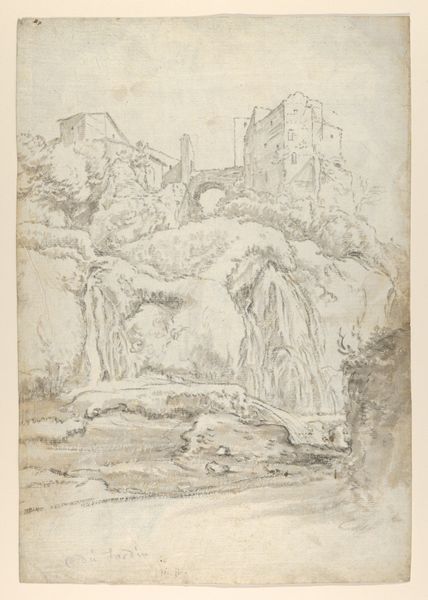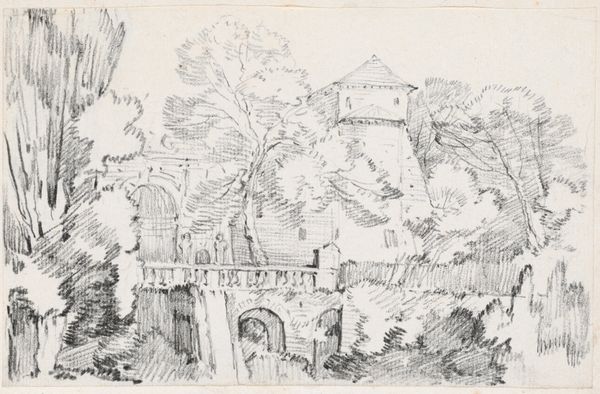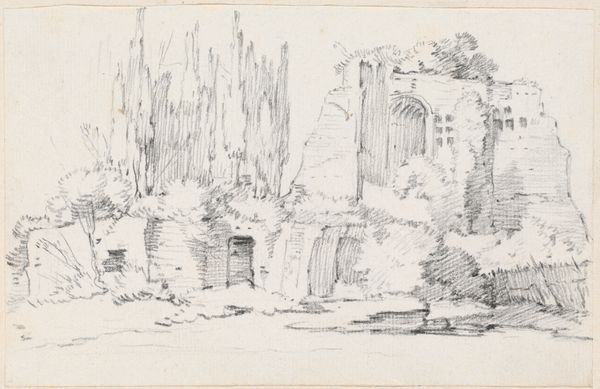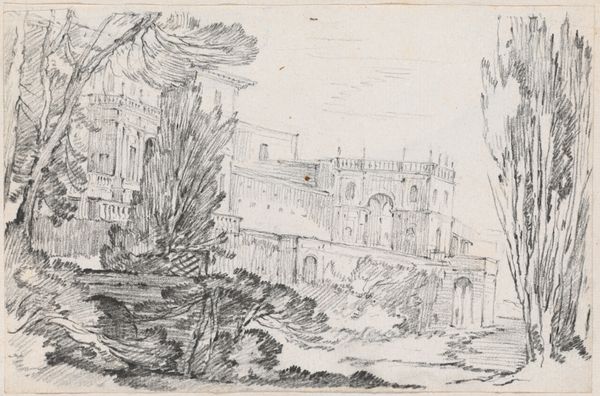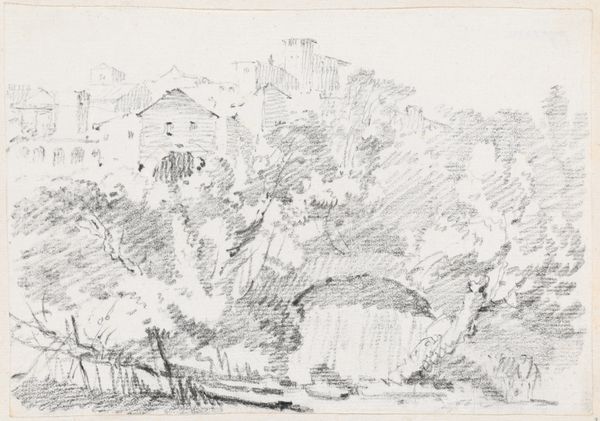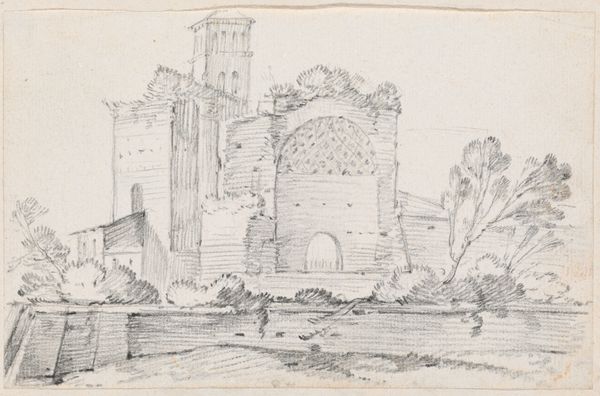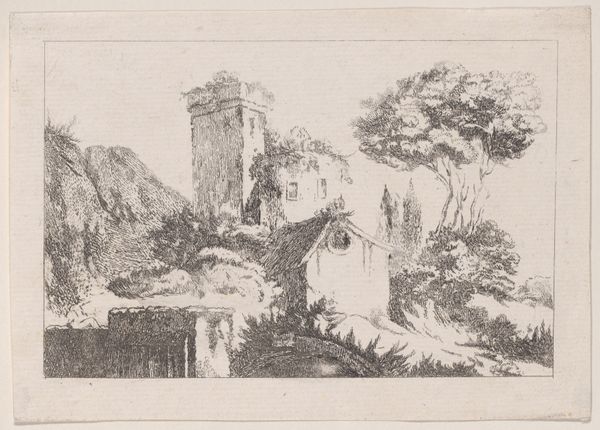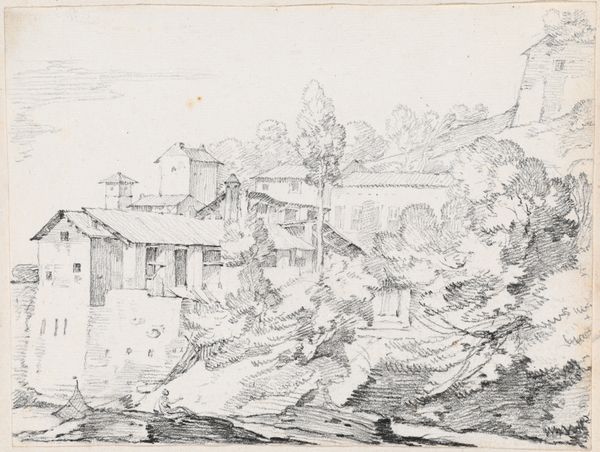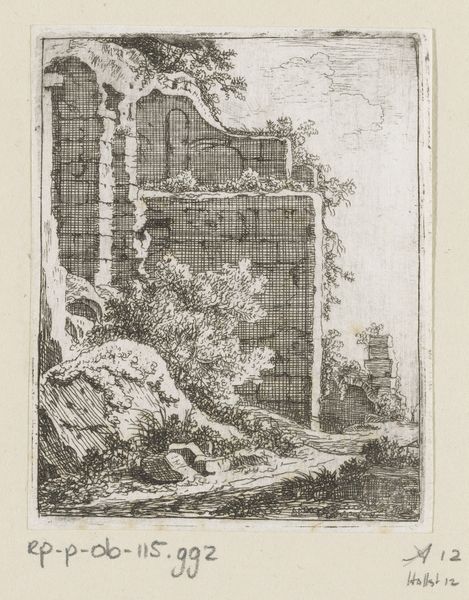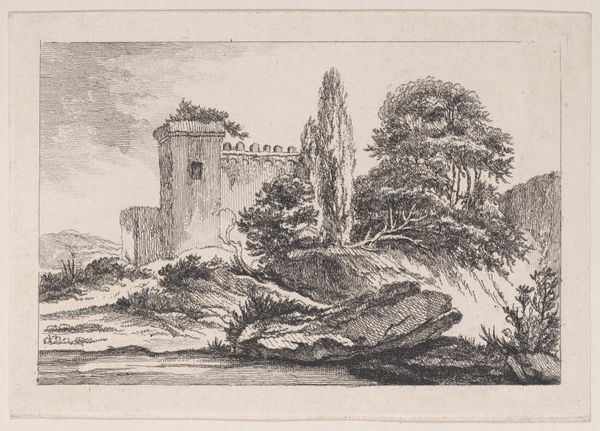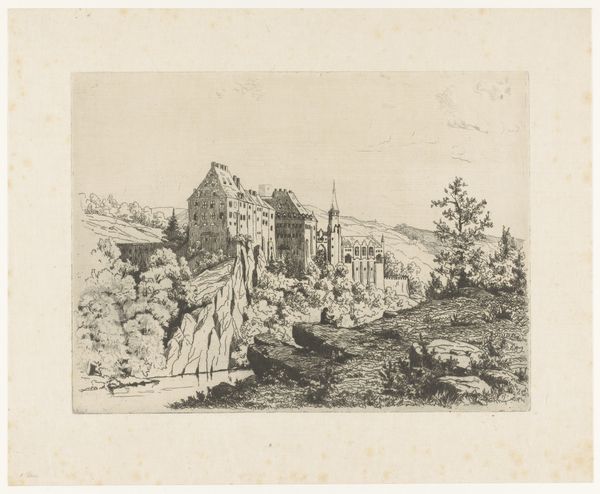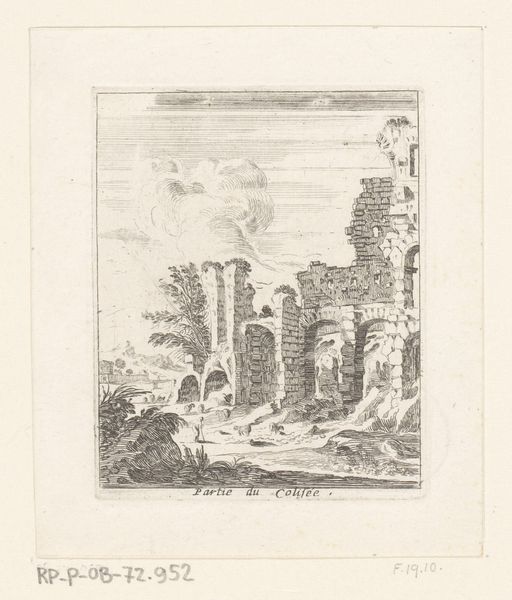
drawing, pencil
#
drawing
#
neoclassicism
#
pen sketch
#
pencil sketch
#
landscape
#
sketchwork
#
pencil
#
15_18th-century
Dimensions: sheet: 11.8 x 18 cm (4 5/8 x 7 1/16 in.) page size: 42.5 x 27.7 cm (16 3/4 x 10 7/8 in.)
Copyright: National Gallery of Art: CC0 1.0
Editor: Here we have Joseph Marie Vien’s "Casino Farnese on the Palatine Hill, Rome," dating from around 1744 to 1750. It’s a pencil and pen sketch. I’m really struck by the rough quality of the line work. What story does the materiality tell us here? Curator: I see the hasty marks less as flaws and more as direct evidence of the artist's labor. Vien, a Neoclassical artist, would have engaged with antique structures not merely as objects of aesthetic admiration but as physical testaments to the vast economic and labor systems required to raise them. The apparent "sketchiness" hints at an emerging aesthetic that privileges the hand and eye of the artist in their lived experience with those classical remains. Editor: So you're saying the drawing itself embodies the artist's engagement with both the physical presence and the social history of the site? How does it differ from, say, a painting of the same scene? Curator: Precisely. While painting might attempt to create an illusion of classical perfection, the medium of drawing and the rawness of this work, specifically, emphasizes the physicality of Vien's interaction. What does the *process* of witnessing, representing, and ultimately *consuming* that architectural labor *look like*? That is a more complicated question than Vien or his patrons might openly ask, but this medium and those sketched, restless lines tell me something profound is rumbling below the surface. Editor: That makes me consider this drawing as more than just a preliminary study. The process and materials are the point. Curator: Exactly! Consider, too, how the “high art” subject matter – Roman architecture – meets the humbler artistic status of a sketch. These apparent class divisions were consistently blurred through increased circulation and consumption of reproducible media from this period forward. Editor: It's amazing to see how examining the material nature of the artwork reveals layers of meaning related to labor, consumption, and the changing status of art itself! Thank you. Curator: It's a constant conversation, looking and thinking!
Comments
No comments
Be the first to comment and join the conversation on the ultimate creative platform.
